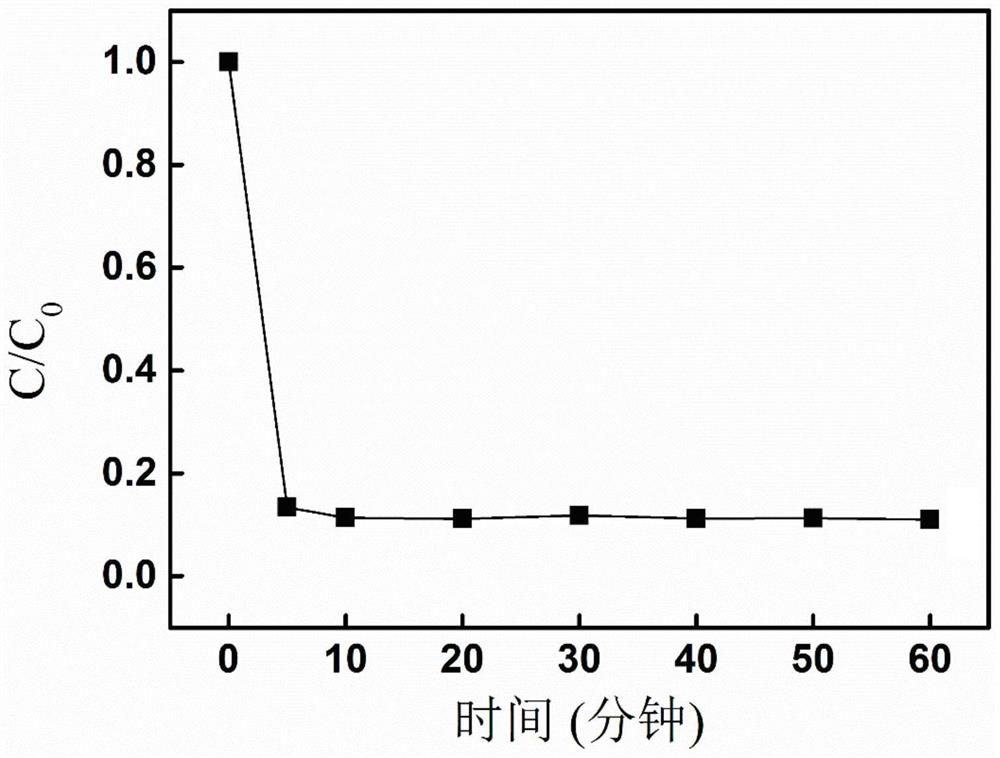A kind of preparation method and application of inorganic catalytic membrane
A catalytic membrane and inorganic technology, applied in chemical instruments and methods, physical/chemical process catalysts, chemical/physical processes, etc., can solve the problem of poor removal of refractory pollutants, weak combination of catalytic layer and membrane, and the function of inorganic membranes Single and other problems, to achieve the effect of improving anti-pollution performance, huge application value and development potential, and enhancing removal effect
- Summary
- Abstract
- Description
- Claims
- Application Information
AI Technical Summary
Problems solved by technology
Method used
Image
Examples
specific Embodiment approach 1
[0026] Specific embodiment one: this embodiment is a kind of preparation method of inorganic catalytic membrane is finished according to the following steps:
[0027] 1. Configure carbonization load reserve fluid:
[0028] Firstly add a buffer substance to the solvent to obtain a preparatory solution, and then add a carbonized precursor to obtain a carbonized loading stock solution;
[0029] The buffer substance described in step 1 is a mixture of potassium dihydrogen phosphate and dipotassium hydrogen phosphate or a mixture of sodium dihydrogen phosphate and disodium hydrogen phosphate;
[0030] The substance ratio of potassium dihydrogen phosphate and dipotassium hydrogen phosphate in the mixture of potassium dihydrogen phosphate and dipotassium hydrogen phosphate described in step 1 is 1:(1~50);
[0031] The substance ratio of sodium dihydrogen phosphate and disodium hydrogen phosphate in the mixture of sodium dihydrogen phosphate and disodium hydrogen phosphate described ...
specific Embodiment approach 2
[0045] Specific embodiment two: the difference between this embodiment and specific embodiment one is that the solvent described in step one is deionized water, ammonia water with a mass fraction of 5% to 25%, and chlorine with a mass fraction of 5% to 40%. Any one of ammonium chloride solution and ammonium nitrate solution with a mass fraction of 5% to 40% or a combination of several of them in any ratio. Other steps are the same as in the first embodiment.
specific Embodiment approach 3
[0046] Specific embodiment three: the difference between this embodiment and specific embodiment one or two is: the nitrogen-containing organic carbon source described in step one is norepinephrine, acetonitrile, DL-methyldopa, dopamine, aniline , diphenylamine, benzylamine, phenylenediamine, melamine, urea, levodopa, polyethyleneimine, polyacrylonitrile, melanin, pyridine, pyrrole, ethylenediamine, o-phenanthroline, 2-hydroxyaniline, mono Any one of cyanamide and acrylamide or a combination of several of them in any ratio. Other steps are the same as those in Embodiment 1 or 2.
PUM
 Login to View More
Login to View More Abstract
Description
Claims
Application Information
 Login to View More
Login to View More - R&D
- Intellectual Property
- Life Sciences
- Materials
- Tech Scout
- Unparalleled Data Quality
- Higher Quality Content
- 60% Fewer Hallucinations
Browse by: Latest US Patents, China's latest patents, Technical Efficacy Thesaurus, Application Domain, Technology Topic, Popular Technical Reports.
© 2025 PatSnap. All rights reserved.Legal|Privacy policy|Modern Slavery Act Transparency Statement|Sitemap|About US| Contact US: help@patsnap.com

